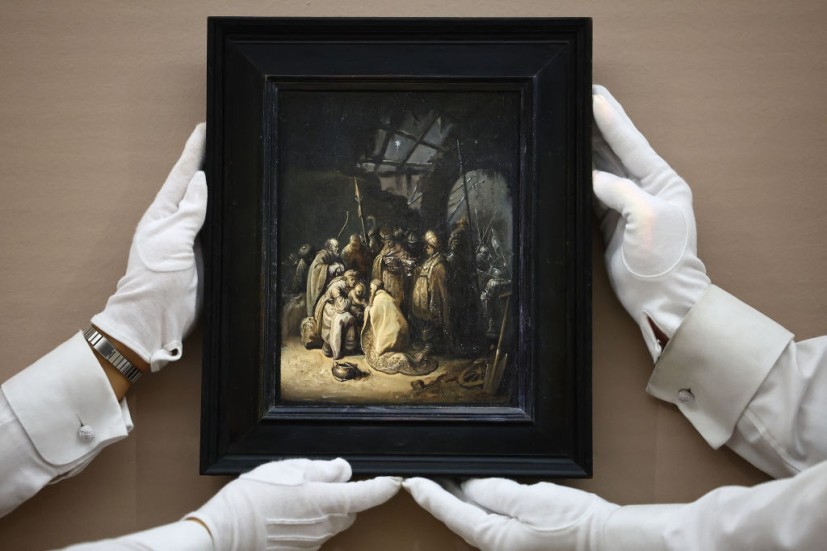Previously evaluated at a comparably small estimation of around $10,000 to $15,000, a rediscovered painting made by Dutch Golden Age painter Rembrandt recently sold for $13.7 million, or £10.9 million, at a Sotheby's "Old Masters and 19th Century Paintings" auction in London last December 6.

How Rembrandt's 'The Adoration of The Kings' Was Found
The oil on oak panel painting from the Dutch master, dated circa 1628, was initially given such a low pre-auction valuation because it was thought to be the work of one of his students, all of whom was collectively known as the "Circle of Rembrandt."
Due to this, the piece was first sold in a 2021 Christie's auction in Amsterdam following this estimation. Public awareness of the piece was non-existent before this sale, with its first emerging presence dating back to the 1950s. The painting itself was mostly monochromatic and depicts the widely-known biblical scene of the Three Wise Men's first meeting with Jesus as an infant.
A Sotheby's spokesperson told CNN that although it only measures a mere 9.6 by 7.2 inches, the piece is a "particularly significant" historical work, especially because it lends another dimension of understanding towards the earlier stages of Rembrandt's craft when he was still honing his artistry through "very ambitious" projects.
As proof of its authenticity as a Rembrandt piece, Sotheby's offers an in-depth review that delves into the painting's background. This report was a result of an eight-month investigation utilizing X-ray imaging technologies and insights from known experts in the field.
In the review, Sotheby's wrote: "It is not certain if Rembrandt intended framing lines or added them himself, but they have certainly been worked over and thickened later because two distinct phases can be detected, of which the first phase is likely to be of an early date."
The earliest records of Rembrandt's "The Adoration of The Kings" can be traced back to a 1714 inventory document that belonged to an art collector from Amsterdam. Afterward, it is believed to have been sold a handful of times over a century.
It reared its head and into public knowledge one last time in 1955, when it was featured in the catalog of J.C.H. Heldring, a German Collector, whose descendants turned the piece over to the Christie's auction house for a sale 70 years later.